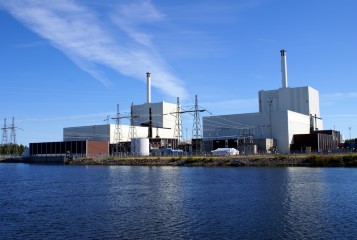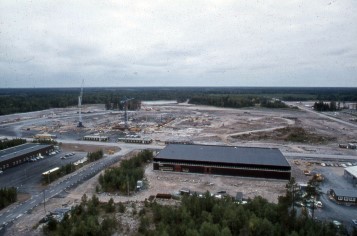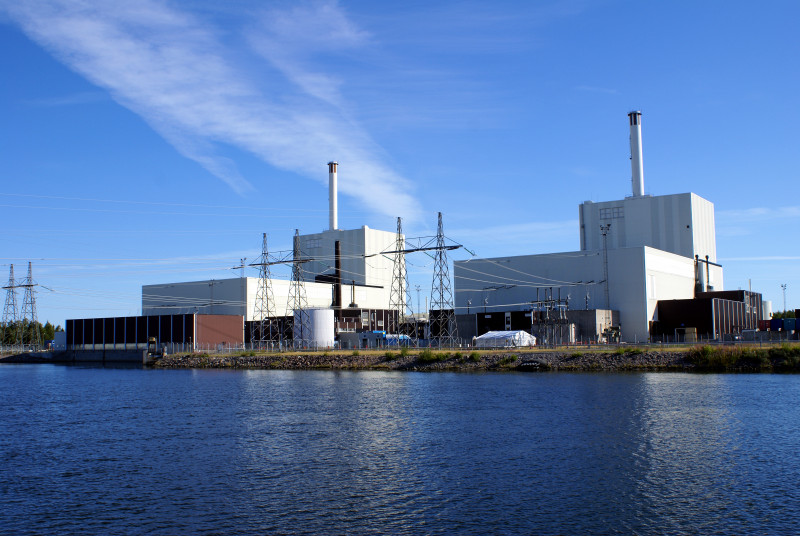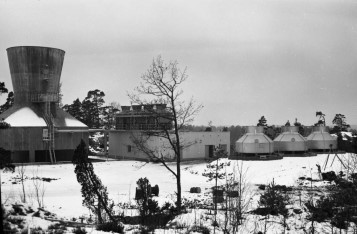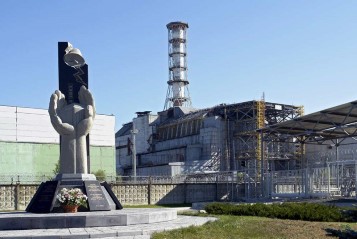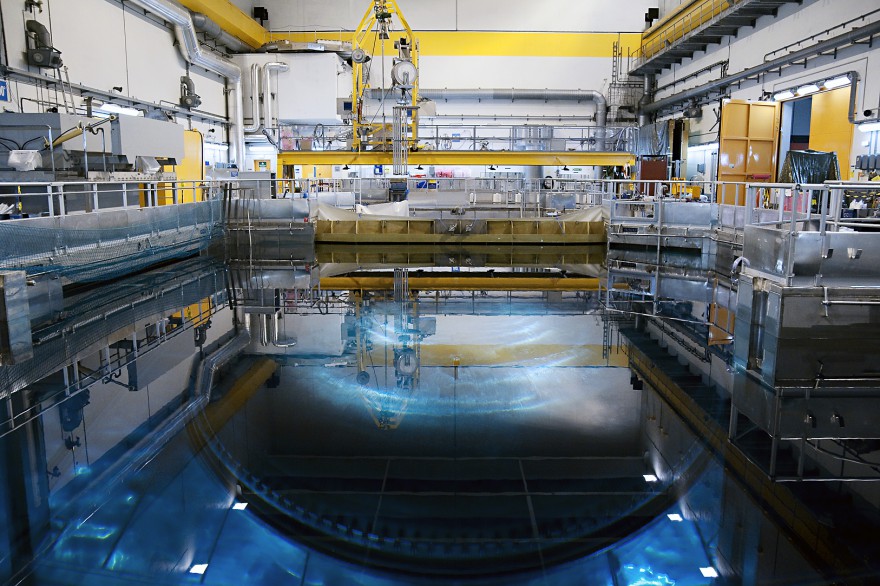
Nuclear power on a grand scale
When the development of nuclear power began, Vattenfall experienced a boom in new construction. As during the hydropower era, construction proceeded at a rapid rate. The work sites at Ringhals and Forsmark were the largest in the Nordic region at the time.
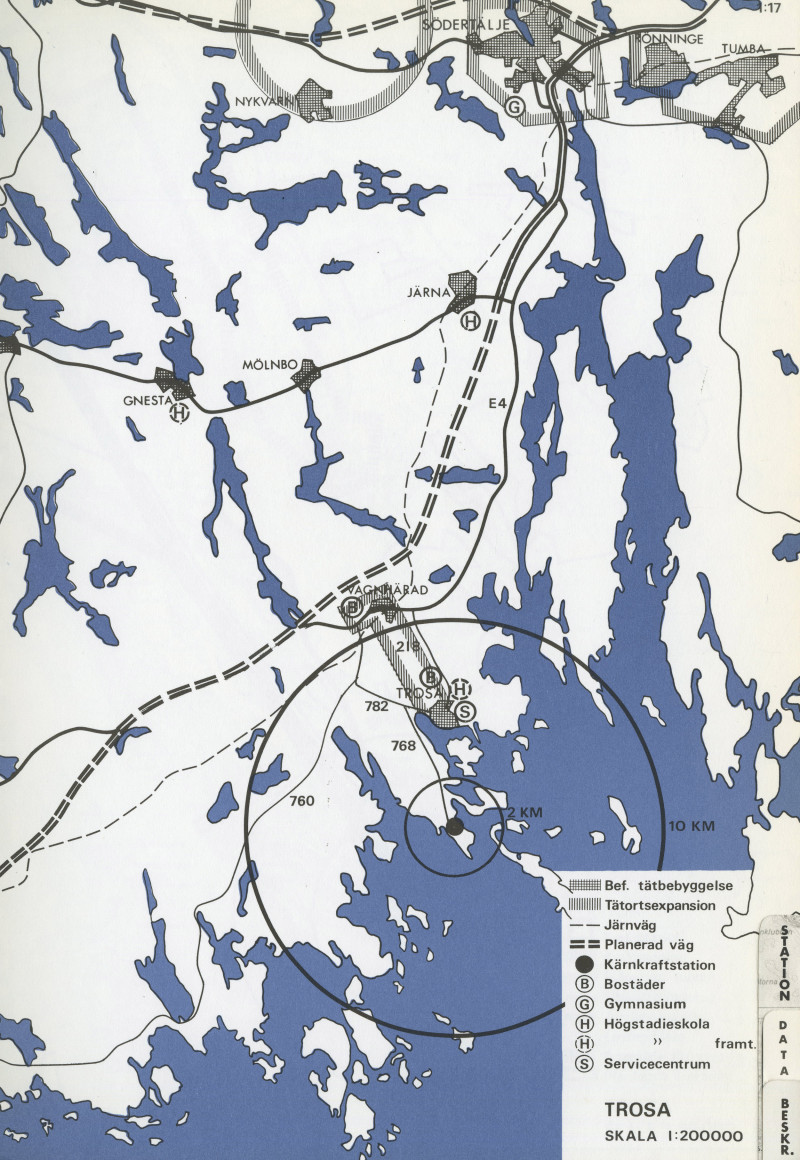
A map of the area around Trosa. From the report 'Kärnkraft på östkust: målsättning, lägen, bedömning' by Statens Vattenfallsverk. Year: 1969 | Place: Trosa | Creator: Okänd | ID: VF001013
In the late 1950s, Vattenfall faced both increased electricity consumption and fewer and fewer expandable hydropower resources. The company then began to examine and investigate suitable sites for nuclear power plants. Vattenfall's first light-water reactor would be at Ringhals on the west coast of Sweden. The second would be either at Ringhals or somewhere on the east coast – ideally, south of the Stockholm area, because it was cheaper than a location north of the capital. However, there was one northern option: Forsmark.
The site Vattenfall regarded as the best option was Käftudden outside Trosa. Vattenfall acquired land and obtained the necessary permits. But the government preferred to locate the nuclear power plant in Forsmark, and so that's what happened.
In April 1969, Vattenfall started building its first commercial nuclear power plant at Ringhals. This was a massive project and was positively received by the municipality. It would create jobs, housing would be built, the tax base would increase and the municipality would get a real boost.

Construction site at Ringhals. Year: 1969 | Place: Ringhals | Creator: Bewe | ID: VF000039
Compromise in 1968: Two reactors in Ringhals
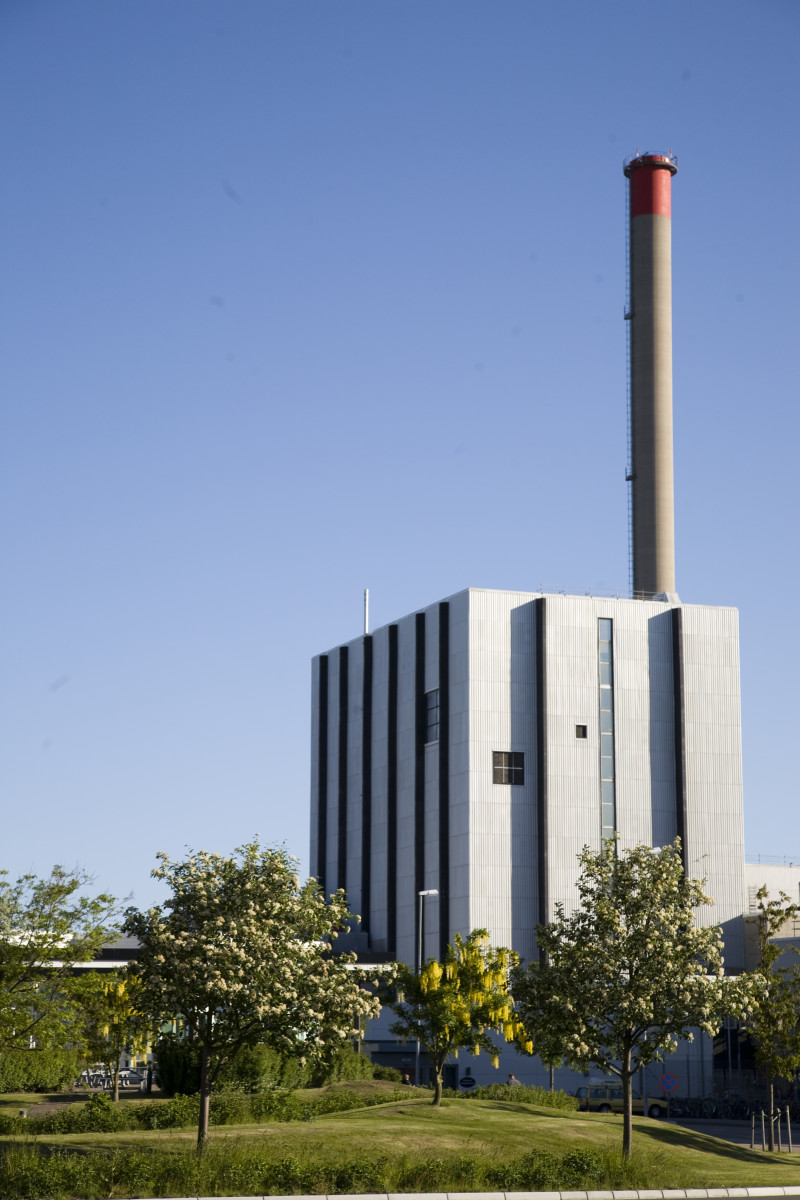
Ringhals nuclear power plant. Year: 2008 | Place: Ringhals | Creator: Charlotta Eldelind | ID: VF000036
Vattenfall wanted to purchase the reactor for Ringhals from Westinghouse in the US. But the state, which owned Vattenfall, wanted to merge its company AB Atomenergi with Asea's nuclear department, an idea that Asea did not like. In order to make Asea accept the merger the state offered to bulid an Asea reactor in Ringhals. This is why Ringhals started with two reactors Ringhals 1 (Asea-Atom) and Ringhals 2 (Westinghouse). And the semi-state-owned company Asea-Atom was created.
As Vattenfall was to build two reactors at Ringhals instead of one, time was a critical factor. For a long time Ringhals was northern Europe's biggest construction site, with more than 3,000 employees. To meet staffing needs, Vattenfall sent out recruiters to their Norrland hydropower districts.
However, Asea-Atom's reactor was delayed. This meant that Ringhals 2 was put into operation first, in 1974. Ringhals 1 was put into operation one year later. The final cost was almost twice as much as estimated. Despite this, Ringhals proved to be a highly profitable investment.

Jonas Norrby. Director general of Vattenfall 1970–1985. Year: 1960 | Place: - | Creator: Vattenfall | ID: VF000041
The disagreements between Vattenfall and its owner were repeated when choosing a reactor for Forsmark. At a meeting at the Ministry of Industry between the Undersecretary of State and the head of Vattenfall, Jonas Norrby, Norrby asked what freedom Vattenfall had to select the reactor supplier for Forsmark 'None!' was the answer. Asea-Atom was to supply the reactor for Forsmark 1, 2 and 3, while Westinghouse was to supply the reactor for Ringhals 3 and 4.
The Swedish Centre Party, which pushed the nuclear power issue hard during the election campaign, enjoyed great success in the elections in 1976. This had major consequences for Vattenfall, as Jonas Norrby said in an interview in connection with his resignation in 1985:
The change of government in 1976 led to an excruciating time for the nuclear industry and particularly for Vattenfall, which, of course, was in a special relationship of obedience to the government. It was impossible to get information to allow us to plan for even one year at a time. It even got so bad that we had to make do with investment funds for three months at a time. Eventually, there was a government crisis and under the Liberal government we got some of the decisions we needed.
However, following the referendum on nuclear power in 1980 the first two reactors at Forsmark could be put into operation, and construction of the third started in earnest. In September of the same year, the workforce totalled 1,700. The peak saw 2,300 people working on construction of Forsmark 3. By that time it was the largest construction site in the Nordic region. In 1985 this, Vattenfall's last, reactor was put into operation. Prior to this Ringhals 3 and 4 had also started – in 1981 and 1983.
Related media
Video player requires marketing cookies.
To view this content please click here to allow marketing cookies.
How the Ringhals project started in 1968 (in Swedish)
Video player requires marketing cookies.
To view this content please click here to allow marketing cookies.
Time for nuclear
Video player requires marketing cookies.
To view this content please click here to allow marketing cookies.

